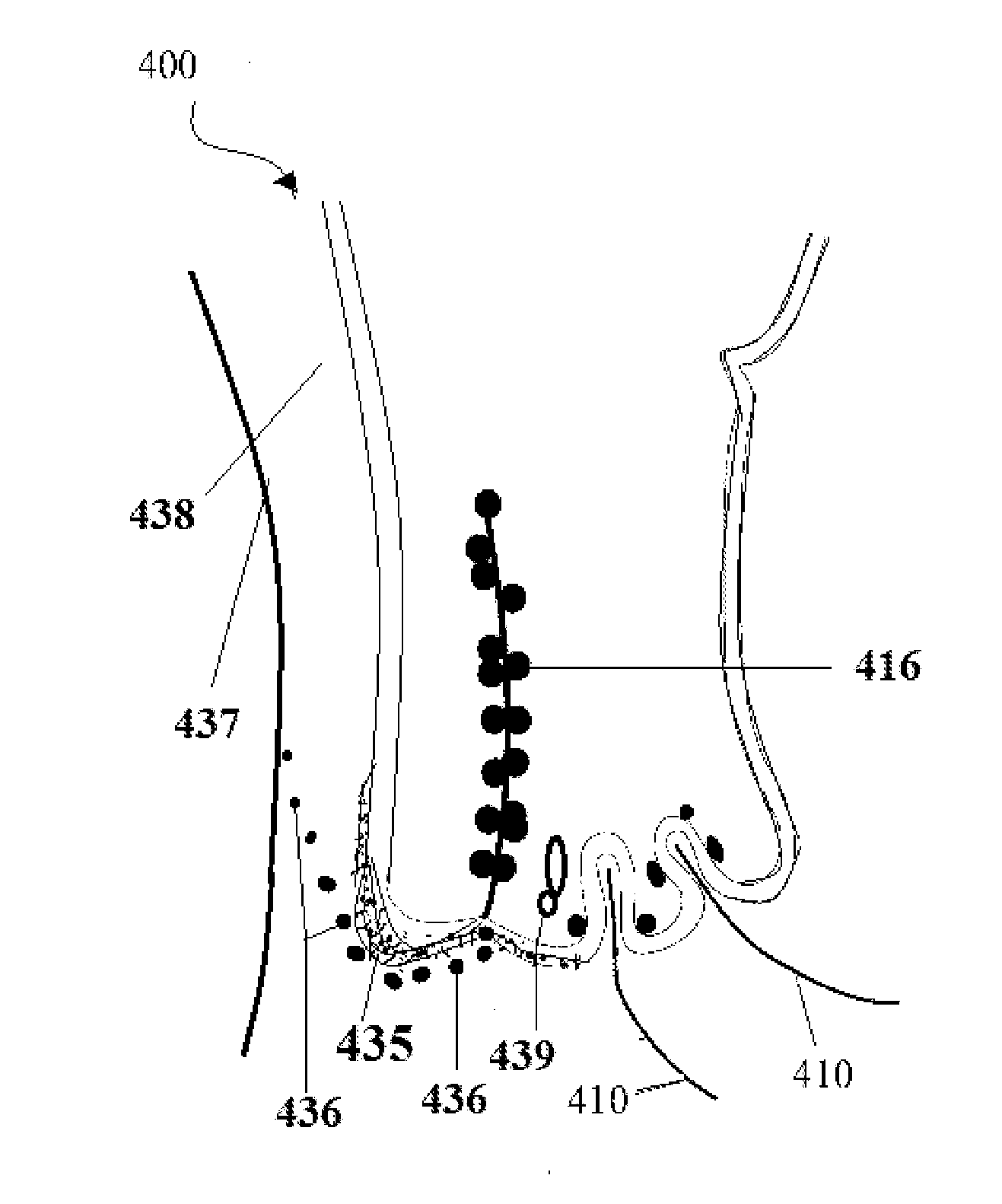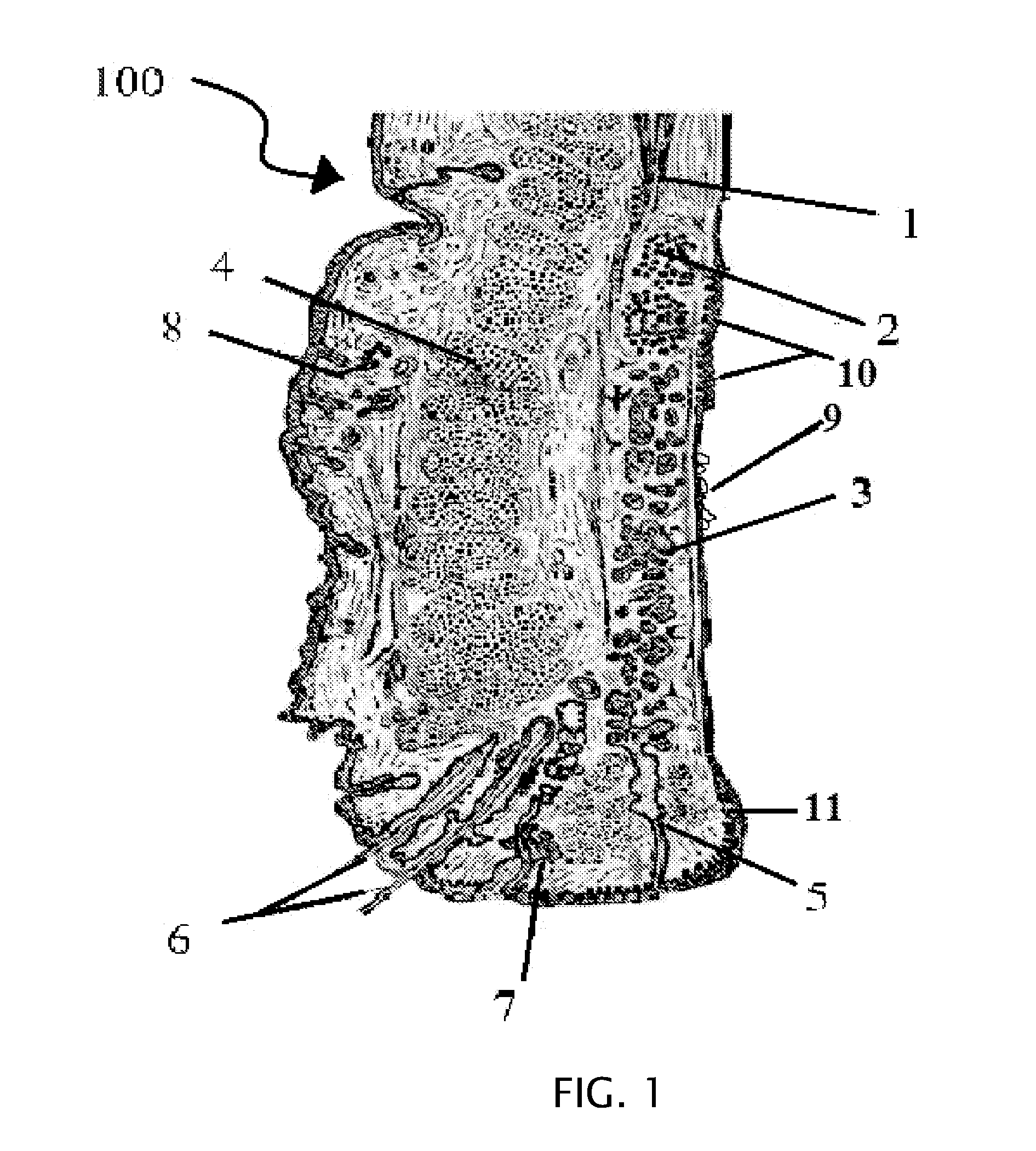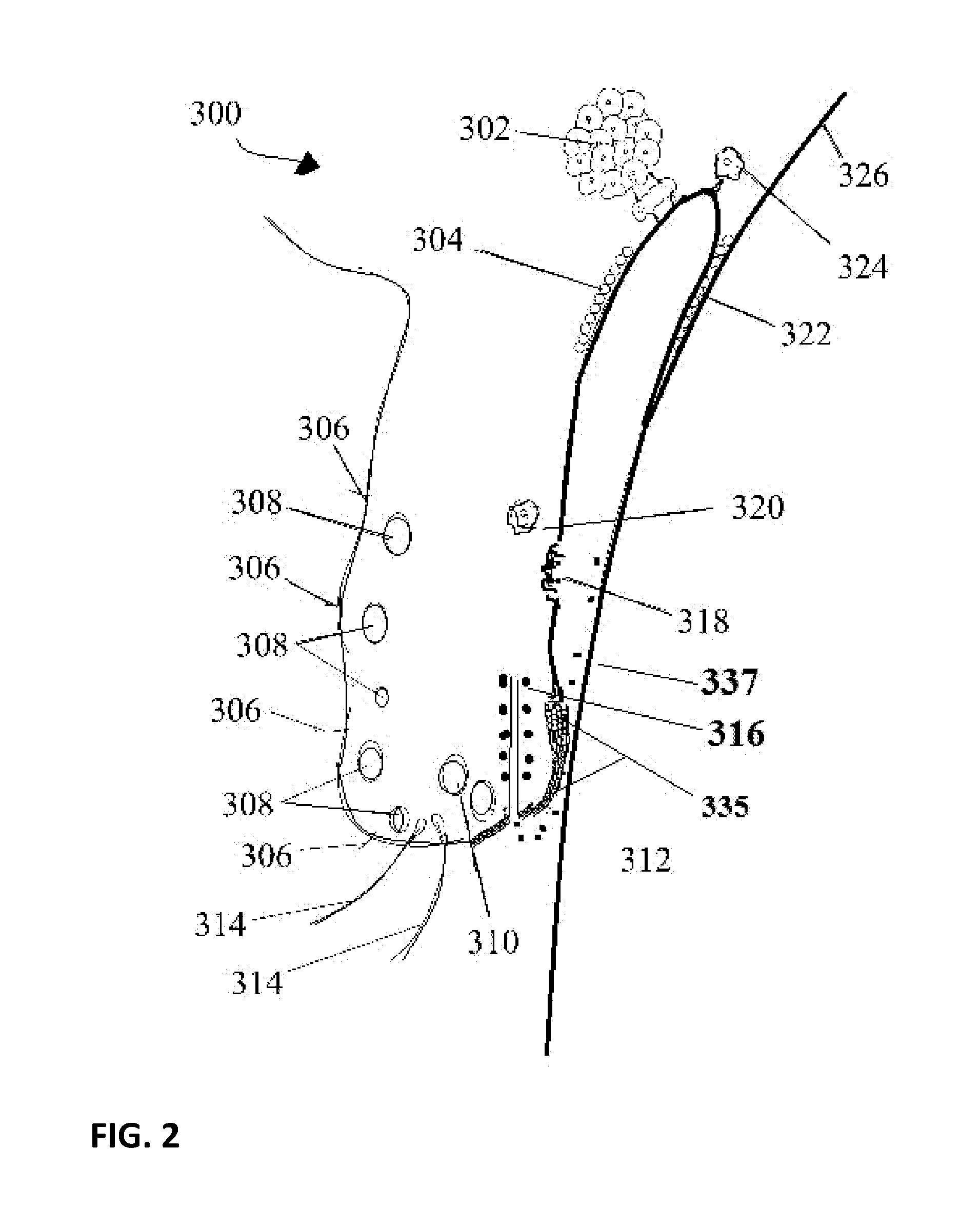New methods of treating dry eye syndrome
a technology of dry eye syndrome and new methods, applied in the field of treatment of dry eye syndrome, can solve the problems of poor wetting of the corneal surface, subsequent desiccation and epithelial damage, and stagnation of secretions, and achieve the effects of enhancing function, enhancing function, and enhancing the functioning of these glands
- Summary
- Abstract
- Description
- Claims
- Application Information
AI Technical Summary
Benefits of technology
Problems solved by technology
Method used
Image
Examples
example 1
[0220]Select the patient and establish the type of dry eye syndrome and its etiology the person is suffering. Test both the quantity and the quality of tear by measuring tear production using the Schirmer tear test (optional). Record the degree of corneal and conjunctival damage as a result of dry eye syndrome by using fluorescein or Rose Bengal staining agents instilled into conjunctival sac followed by the thorough examination of the cornea and the ocular surfaces using the magnification of a slit-lamp utilizing filters to intensify the natural fluorescence of these dyes after one minute after application of the stains. The damage to the tissue if there is any is revealed as “staining”, which is the infiltration of the dye into the cell or between the tight junctions of the cells.
[0221]Position the patient in supine posture or standing with head extended on a support or hyper extended. Using a dropper, or dropper bottle containing the insulin formulations are instilled one to two ...
example 2
[0222]A topical emulsion of cyclosporin for treating KCS has been FDA approved and promoted under the trade name Restasis™ (Allergan, Inc., Irvine, Calif.). It is a mixture of cyclosporin combined with a higher fatty acid glyceride, such as castor oil, and a surface active agent, such as polysorbate 80, and an emulsion stabilizer, such as a cross-linked polyacrylate. It acts by decreasing the inflammation on the eye surface (probably tear glandular system) and helps to increase the production of healthy tears. However, treatment with an emulsion containing oily droplets can result in eye irritation or a clouding of visual field. Due to oily preparation, the active ingredient is less bioavailable. Restasis is not appropriate for immediate relief for an uncomfortable irritated eye as it may take up to 6 months for maximum improvement (source: The Eye Digest). To make more effective, add insulin to the preparation so that Insulin can enhance the uptake of cyclosporin, and augment-ampli...
example 3
[0223]Use the insulin preparation as described above: Apply one drop in each eye conjunctival sac. Apply pressure at nasolacrimal sac at the medial canthus-nasal junction (FIG. 4) to prevent the leaking of the insulin drop to the nasal mucosa with subsequent development of systemic complication of hypoglycemia. This maneuver is optional and precautionary in hypoglycemic individuals. Then apply one drop of aqueous cyclosporin water soluble eye preparation as formulated in the invention U.S. Patent Application Publication Number: US 2010 / 0016219 Al. Insulin can enhance the uptake of water soluble cyclosporin than oil soluble preparations; and augment-amplify the effects of the cyclosporins on the structures involved in development of dry eye syndrome. Due to use of insulin, the effect of cyclosporins lasts longer and helps to restore the lacrimal secretions and do not have to wait for 6 months to achieve the effect as seen in oily Cyclosporin preparations. Insulin not only has effect ...
PUM
| Property | Measurement | Unit |
|---|---|---|
| diameter | aaaaa | aaaaa |
| distance | aaaaa | aaaaa |
| height | aaaaa | aaaaa |
Abstract
Description
Claims
Application Information
 Login to View More
Login to View More - R&D
- Intellectual Property
- Life Sciences
- Materials
- Tech Scout
- Unparalleled Data Quality
- Higher Quality Content
- 60% Fewer Hallucinations
Browse by: Latest US Patents, China's latest patents, Technical Efficacy Thesaurus, Application Domain, Technology Topic, Popular Technical Reports.
© 2025 PatSnap. All rights reserved.Legal|Privacy policy|Modern Slavery Act Transparency Statement|Sitemap|About US| Contact US: help@patsnap.com



